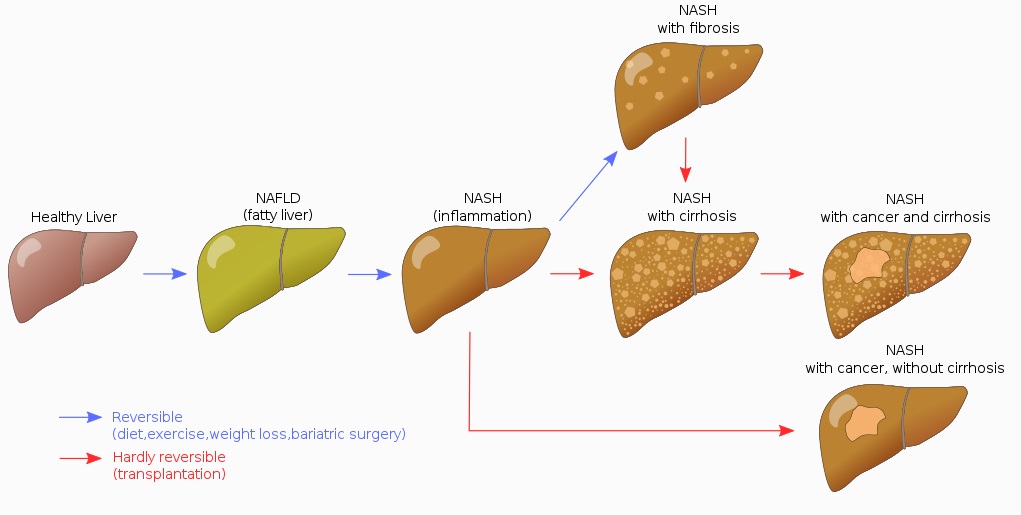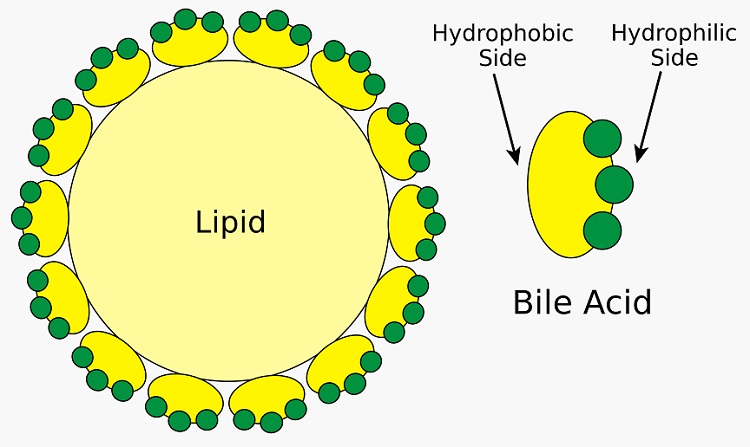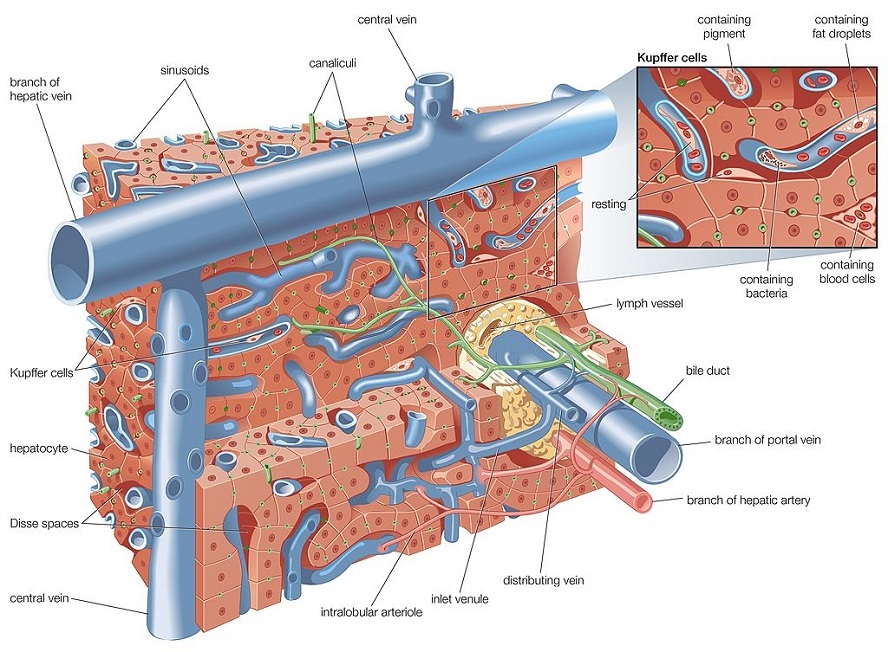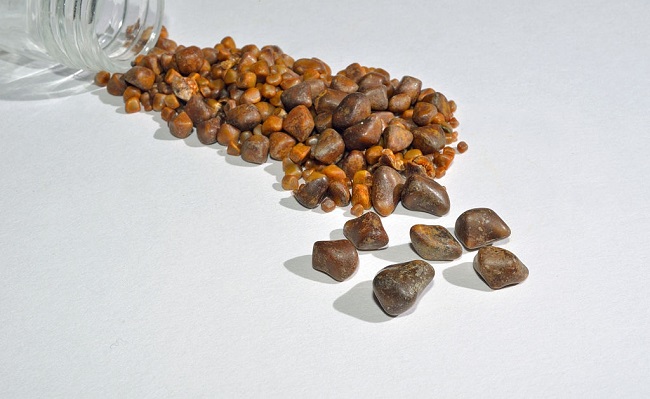Definition
Bile salts are found in bile, a secretion produced by liver cells to aid digestion. Although bile is 95% water, bile salts are its most prominent organic solutes and play a major role in fat emulsification. Human bile contains at least twelve bile salts. Only two of these are primary or synthesized in the liver. Secondary bile salts are synthesized by the intestinal flora.
Bile Salts Function
Bile salts function not only as a lipid emulsifying agent but help to regulate the flow of bile from the liver into the bile capillaries (bile canaliculi) by way of osmosis. This particular flow is known as the bile salt-dependent flow or BDSF. Working together with bile salt-independent flow (BSIF), these mechanisms enable cholehepatic shunting, which is the flow of hepatocyte-produced bile into the gall bladder.
A further role of bile salts is as a signaling molecule that helps to regulate not only fat metabolism but also glucose metabolism. This is done through the activation of certain cell receptors associated with lipid and glucose processing. Interaction with receptors also lowers triglyceride levels and inflammatory reactions. Tests on mice in which these receptors were blocked gave rise to high levels of fatty acids in the blood, increase insulin resistance, impaired glucose tolerance, and liver disease. Other signaling qualities include the regulation of bile acid levels using the same receptors through inhibition or activation of bile acid production and excretion.
More recent research has indicated that certain ratios of gut bacteria species can increase gall stone formation and non-alcoholic fatty liver disease (NAFLD) (see image below). Tests on rodents fed a high-fat diet were found to host excessive numbers of Bilophila wadsworthia which increased hepatic conjugation and so absorbed higher levels of fat. This points to bile acids being an extremely important component of the healthy gut microbiota.

Bile Salts Types
There are four different types of bile salts – primary, secondary, conjugated and unconjugated. They play different roles in the human body.
Hepatocytes first produce bile acids from cholesterol by way of a cascade that requires seventeen different enzymes. Primary bile salts are then produced via the subsequent conversion of bile acids into bile salts, usually through the binding of potassium or sodium ions. The most prolific of primary bile salts in humans are cholate and chenodeoxycholate. As already mentioned, primary bile salts help regulate the flow of bile into the gall bladder. A further role is to maintain cholesterol in a soluble form and so prevent the buildup of gall stones.
Secondary bile salts are produced through the action of bacteria in the intestines that transform primary bile salts into secondary bile salts through the removal of a hydroxyl group. Examples of this conversion are cholate becoming deoxycholate (DOC) and chenodeoxycholate becoming lithocholate. Another common secondary bile salt in humans is ursodeoxycholate.
Conjugated bile salts are the result of primary bile salts bonding to either taurine or glycine amino acids within the hepatocyte where, for example, cholate becomes either taurocholic acid or glycocholic acid respectively. Conjugation increases bile salt solubility in water and so enhances their ability to emulsify lipids; there are significantly more conjugated than unconjugated bile salts in the human body. The main function of these intestinal bile salts is to aid in the digestion of dietary fats through emulsification, where fats are split into micelles before being further processed (see image below). Conjugated bile salts also prevent passive reabsorption through the ileum wall.

Bacteria sometimes remove the taurine or glycine from conjugated bile salts to provide secondary bile salts. Unconjugated bile salts are simply those primary or secondary salts found within the biliary system that are not bonded to taurine or glycine either through the action of bacteria or through a deficiency of these two important amino acids. Bacteria will remove taurine and glycine prior to the excretion of bile in the feces, so keeping these important amino acid sources available. This is why taurine supplements are often advertised as remedy for liver damage and high cholesterol levels.
Bile Salts and Bile Secretion
Bile salts and bile secretion are interdependent and their production and part of their function occur within the biliary tract. The image below shows the internal structure of the liver to the right with the green-colored bile ducts, and blue and red blood supply. Notice the network of blood and bile capillaries that surround the hepatocytes.

The first step of bile production occurs in the hepatocytes or liver cells which produce primary bile and excrete this into a capillary system. These capillaries are nothing to do with blood supply but are a single cell-layered tubular system that allows the components of bile to enter and leave the biliary system. These components include water which affects both the flow rate and solute concentrations.
The much less proliferative cholangiocytes are located within the walls of the liver capillaries. These absorb and secrete the components of primary bile as it passes through the bile ducts. Hepatocytes produce approximately 450 ml of bile every 24 hours; cholangiocytes around 150 ml. Of this total sum, it is calculated that half of the bile flow rate is bile salt-dependent.
The regulation of bile components is dependent upon the availability of transporter proteins that bring substances in and out between both the blood and both types of liver cell and also between these cells and the bile within the capillaries. Products produced within the cells follow microtubule pathways to the cell membranes where they are then transported out (exocytosis) via transporter proteins. As this is an active transport system, transporter proteins are able to secrete these products into bile even when the concentration gradients work against them.
As salts, bile salts increase water absorption where salt concentrations are higher. This is bile salt-dependent flow. Furthermore, charged ions in the form of sodium (Na+) move passively to produce an electrochemical gradient across the cellular membranes.
The hepatocytes secrete bile salts together with bilirubin (giving bile its distinct brownish coloration), cholesterol, phospholipids, ions, and proteins within a solution that consists of approximately 95% water. These products are secreted into the capillary system that runs through the hepatocytes and joins to form a network of bile ducts.
Liver bile consists of around 35 mM (millimole) of bile salts. Further modification through cholangiocyte action and additional concentration inside the gall bladder reservoir increases these levels to over 300 mM. Other components of bile also increase, such as bile pigments, cholesterol, lecithin, and sodium, potassium and calcium ions. The opposite is true for levels of bicarbonate and negative chloride ions which significantly decrease.
Biliary System Anatomy
The biliary tract is composed of the liver, gall bladder, and bile ducts. Capillaries running through the hepatocytes join to form ducts. These, in turn, join to form the common hepatic duct that quickly turns into the common bile duct at the point where the cystic duct leading to the gall bladder splits off. Primary bile is stored and concentrated within the gall bladder.

At regular intervals, the gall bladder is stimulated to contract, releasing bile through the cystic duct, into the intersection with the common bile duct and down through the hepatopancreatic ampulla of Vater which is the point where the pancreatic duct joins to the common bile duct. Then both pancreatic juices and bile can flow into the duodenum via the sphincter of Oddi. This sphincter is controlled by the presence of the multifunctional hormone cholecystokinin. This hormone is also responsible for the signals that regulate the contractions of the gall bladder, increased bile production, increased pancreatic digestive enzyme production and gastric emptying regulation. Bile then travels through the gut where it emulsifies fats and oils to produce easier to process fat micelles.
Bile Salt Pathology
Bile salt pathologies are usually due to a lack of bile salts or any of the other ingredients of healthy bile. As we have seen, bile helps in the digestion of fats and oils. Bile salts, therefore, are essential for hormone production, storage of the fat-soluble vitamins A, D, E and K, insulation, forming and repairing cellular membranes, brain tissue formation, vision, immunity, inflammatory reaction regulation, blood clotting … the list goes on.
This means that bile salt pathologies are multiple but generally start as bile malabsorption. Bile salts cannot be reabsorbed in the intestine and are excreted in the feces. As bile salts attract water molecules, the first symptom is watery diarrhea. This can be an acute or chronic condition and is often associated with irritable bowel syndrome, Crohn’s disease, and celiac disease.
Imbalances in the components of bile can lead to a too high level of unprocessed cholesterol which is an indication for gall stone formation, usually inside the gall bladder itself. These stones are cholesterol or bilirubin based and the result of crystallization in low water environments. As bile salts are primarily responsible for the water concentration of bile, it is possible to say that gall stones are the result of bile salt dysfunction. Gall stones can be expulsed from the gall bladder and become trapped inside the biliary system duct causing a blocked tract and bile stagnation where infection can occur. Symptoms are extreme pain in the center of the stomach or slightly to the right that continues or comes in waves and nausea. In the case of infection, a high fever is also a telling symptom.

Further research still needs to be done in the role of bile salts in fat and glucose signaling and gut microbiota but symptoms pertaining to insulin resistance, diabetes, obesity, mood, and metabolism may also be in some part a reaction to bile salt imbalances.
Quiz
